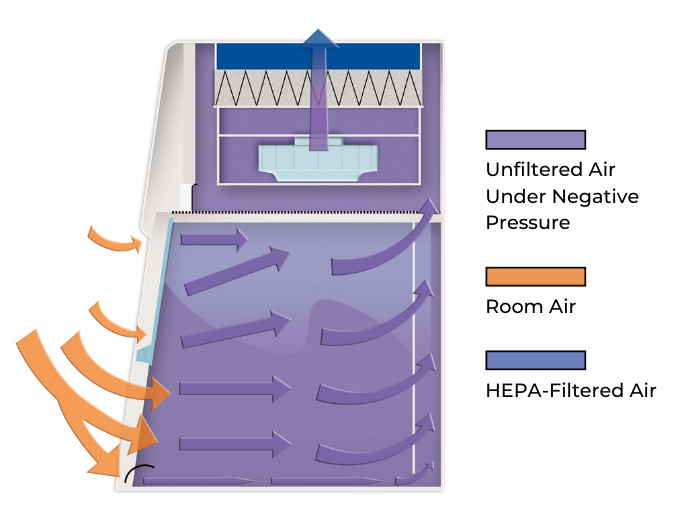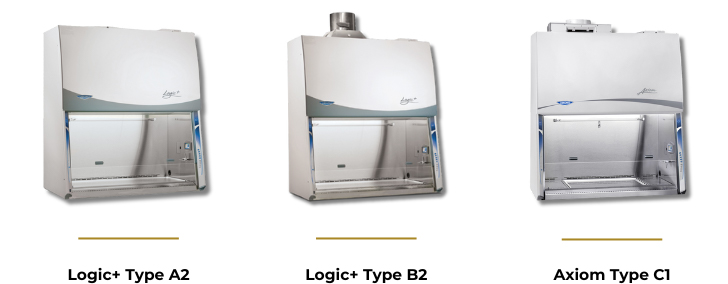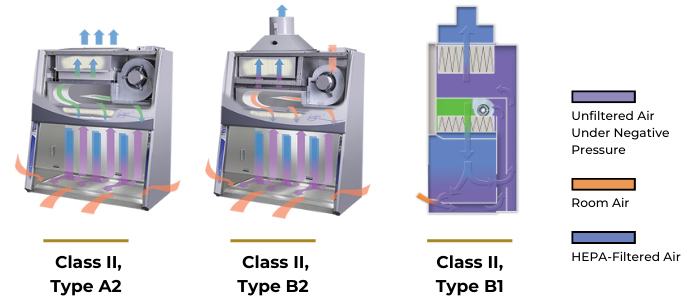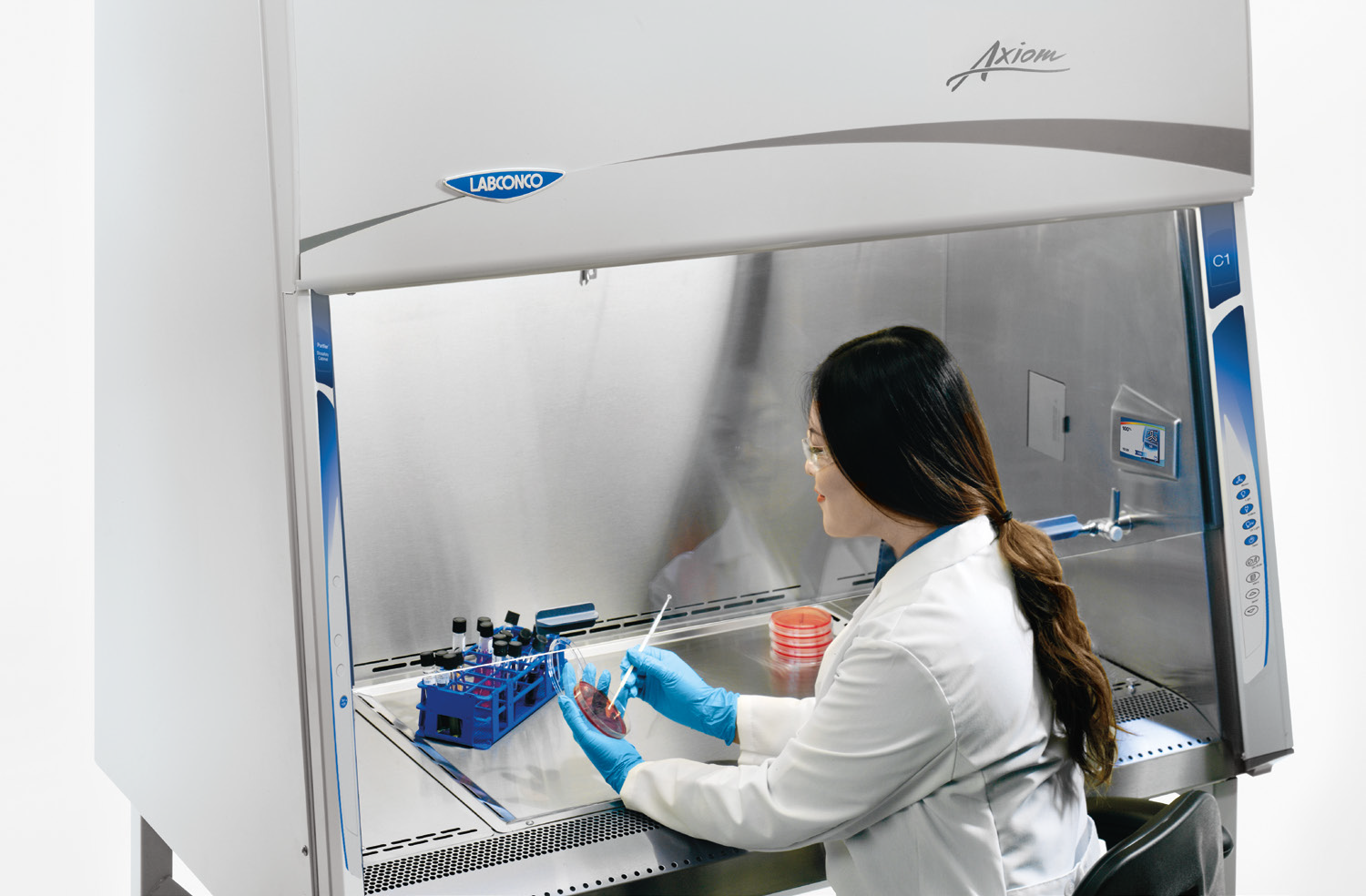Biocontainment Excellence: 3 Classes of Biological Safety Cabinets & Enclosures
Written by Canadian Scientific
Biosafety cabinets (BSCs) are a type of biocontainment equipment used in life science laboratories. They play a pivotal role in maintaining a secure and controlled lab environment by preventing the release of harmful agents and protecting from potential hazards. How do you know which biosafety cabinet is right for your lab? When tasked with selecting the right BSC for your lab, consider the following:
- Your protection requirements for the user, product, and process
- The type of biosafety cabinet you require
- Your application requirements
- BSC accessories to enhance your experience
Every BSC is categorized by a specific biosafety class: Class I, Class II or Class III, with some classes having subtypes (Type A, Type B, Type C). Join us as we distinguish between the different BSC classes, reveal their functions, and explore trusted sources to procure the right biological safety cabinet and accessories for your lab.
3 Classes of Biosafety Cabinets
Class I
- Suitable for low to moderate-risk agents
- Provides personnel and environmental protection, but not product protection
- Airflow is drawn from the laboratory into the cabinet, and exhaust air is filtered before release
- Safe for use with agents classified as Biosafety Level (BSL) 1, 2, 3 in conjunction with other protective measures required for these biosafety levels.
Class II Type A2
- Can handle everything in a biological lab except for hazardous chemistry
- Exhausts HEPA-filtered air back into the laboratory
- Can be connected to laboratory exhaust systems
- Recirculated HEPA-filtered downflow air creates an ISO 5 environment within the work area that protects the samples from external contaminant
- Laminar (unidirectional) downflow air pattern helps prevent cross contamination within the cabinet, between samples
Class II Type B1
- Can handle hazardous chemistry
- HEPA-filtered downflow air composed mostly of uncontaminated recirculated inflow air
- Must be connected to a building exhaust system
- Exhaust most of the contaminated downflow air through a dedicated duct after passing through a HEPA filter
- Safe for work involving limited amounts of volatile chemicals and trace amounts of radionuclides
Class II Type B2
- Can handle hazardous chemistry
- Referred to as 100% Exhaust or Total Exhaust cabinets
- Requires a dedicated exhaust system and dedicated remote blower
- HEPA-filtered downflow air drawn from the lab and exhausts all inflow and downflow air out to the atmosphere after filtration through a HEPA filter
- Best for limited amounts of volatile chemicals and trace amounts of radionuclides
- Has the highest installation and operational costs of any Class II BSC
Class II Type A2 – Flexible, Cost Effective
- Can operate as either a Type A cabinet when in recirculating mode or a Type B cabinet when connected to remote exhaust
- Can be changed from one mode to the other by connecting or disconnecting the exhaust and having the cabinet recertified
- Do not require a dedicated exhaust run or dedicated blower
- Ease of exhausting, combined with the reduced air requirements
- Excellent choice for labs that require flexibility
Axiom Type C1 adapts to changing functions. It is engineered to change functions over time and addressing the need to have flexibility in the lab while maintaining safety. By eliminating the need for 2 separate exhaust systems, the Axiom Type C1 provides flexible, ergonomic, energy efficient above all other biosafety cabinets.
Class III
Class III Biosafety Cabinets offer the highest level of containment, ensuring maximum safety for personnel, the environment, and the product. These cabinets are completely enclosed and leak-tight, with all operations conducted through gloves attached to the unit. A transfer chamber with interlocked doors allows for the sterilization of materials before entering or exiting the glove box. The cabinet is maintained under negative pressure, and supply air is drawn in through HEPA filters. Exhaust air is treated with either double HEPA filtration or single HEPA filtration followed by air incineration, then safely exhausted outside. These cabinets are suitable for handling agents classified as BSL 1, 2, 3, or 4, when used with other necessary protective measures. Most commonly found in BSL 3 and BSL 4 laboratories (also known as cabinet laboratories), Class III Biosafety Cabinets provide the ultimate level of protection for high-risk research and containment environments.
Biosafety Cabinet Functions:
Personnel Protection
Shields researchers from inhaling or coming into contact with hazardous materials
Environmental Protection
Prevents the release of contaminants into the laboratory and surrounding areas
Product Protection
Safeguards the integrity of the experiment or material being handled within the cabinet
The Benefits of Knowing the Differences:
Risk Mitigation
Choosing the right biosafety cabinet ensures that the laboratory is equipped to handle specific levels of risk associated with the materials being used
Regulatory Compliance
Different biosafety levels are mandated by regulatory bodies, and compliance is essential to maintaining a safe laboratory environment
Optimized Performance
Understanding biosafety cabinet classes helps you make an informed decision about which type is best for your safety and efficiency
By comprehending the different classes and functions of these cabinets, your laboratory can implement the appropriate safety measures, safeguarding both researchers and the integrity of your experiments. Reach out to learn more or to get a quote for your lab!
Return to Blog Main Page
Advance your research with full confidence in your lab.

 Products
Products Products
Products


